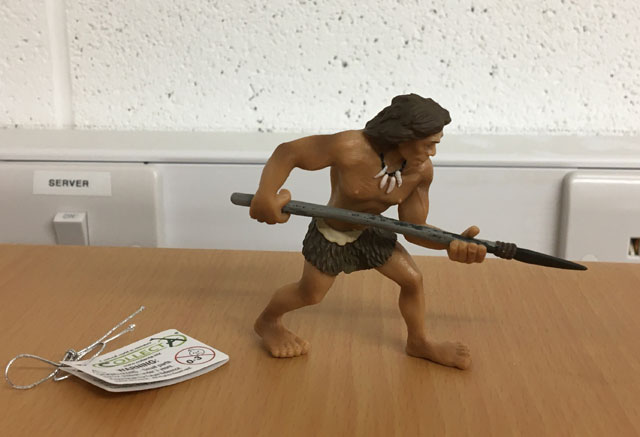One Small Step for Man a Giant Leap for Mankind
Best Foot Forward for Homo sapiens – Spring Loaded Heels
Our species may have had a crucial, anatomical advantage over Neanderthals when it came to surviving the environmental change that led to the development of wide expanses of tundra. We were better at long distance running and walking.
For those of us who remember the perils of enforced cross-country runs when we were at school, it may be hard to imagine that our species may have had a mechanical advantage when it came to travelling distances, but the structure of the bones and tendons in our feet could have provided us with a crucial evolutionary advantage over Neanderthals.
Researchers studying the heels of modern humans have found that our bone structure stretches the Achilles tendon taut, storing energy more efficiently than the Neanderthal foot and allowing us to run better.
Neanderthals
However, Neanderthals (H. neanderthalensis), were no slouches when it came to walking, their feet and ankles gave them an advantage in walking uphill and the bones in the foot supported the ankle more if they jumped, so says the research team based at the University of Arizona in Tucson.
In our ancestors, just as with people today, a short, lower heel stretched the Achilles tendon tight. This arrangement increases the tendon’s spring-like action, making it an efficient store of energy; helping us to run efficiently and to make long-distance treks. This anatomical difference between our species and the Neanderthals, one of a number of subtle differences, could have given us the edge when hunting on the wide, open plains of prehistory.
Anthropologist, David Raichlen, who led the research, published in the “Journal of Human Evolution”, commented:
“We can say that energy costs of running differed between Neanderthals and modern humans, but our data does not really provide answers as to what happened to the Neanderthals.”
Extinction Around 28,000 Years Ago
Scientists believe that the last of the Neanderthals died out approximately 28,000 years ago. These humans, were very well adapted to the cold European environment, they had bigger brains than us and were physically stronger, but for some reason or reasons, they became extinct and our species went onto thrive.
Anthropologists already know that compared to our ancestors, Neanderthals were stronger, heavier, had shorter legs and smaller inner-ear canals (important for co-ordination and balance) – all factors in making them less efficient runners compared to us. However, this new line of study provides evidence to suggest that Neanderthals were disadvantaged compared to us when it came to moving long distances.
A Replica of a Neanderthal Man

Selecting a CollectA Neanderthal man figure for an Everything Dinosaur customer. Picture credit: Everything Dinosaur.
Picture credit: Everything Dinosaur
To view the CollectA range of prehistoric figures: CollectA Prehistoric Life Figures and Models.
Homo sapiens
The research shows the distance runner’s foot and ankle was very efficient. Measurements of part of the heel bone has helped the researchers determine how efficiently an individual could run long distances.
In a forested environment, the Neanderthals tactics of ambushing prey would have been a successful strategy. Their strength and power would have given them an edge over H. sapiens. However, if climate change led to a loss of forests and a more open environment, the ability to track animals over long distances, running prey to exhaustion would have been a tactic better suited to our ancestors. Unfortunately, the lack of fossil human foot bones is preventing scientists from determining when our running-friendly, spring-loaded heels first evolved.
Raichlen and his team calculated rates of oxygen consumption for eight experienced long-distance runners as they performed on a treadmill for 10 minutes running at a pacy 16 km/h. On a separate day, MRI scans of each person’s heel and Achilles tendons revealed the nature of the potential mechanical advantage. Those runners who used oxygen most efficiently whilst running had shorter heel bones.
Heel Bone Measurements
Heel-bone measurements of 13 fossil Homo sapiens that lived between approximately 30,000 and 100,000 years ago resemble those of today’s runners, the scientists have stated. On average, the measurements indicate that the ancient humans expended 6.9 percent more energy while running than their counterparts today did, not a substantial difference, according to the researchers.
Analyses of heel bones of six Neanderthals from the same time period indicate that these hominids used an average of 11.4 percent more energy while running than modern athletes did, a statistically notable disparity.
Energy efficiency while running depends far more on a person’s anatomy than on physical training, the researchers say. They used distance runners as a modern comparison group in order to account for any training effects. The research concludes that our springy heels enabling us to run for longer may have proved decisive as hunting moved to the open plains.
Is this a case of best foot forward, in terms of hominid evolution?

